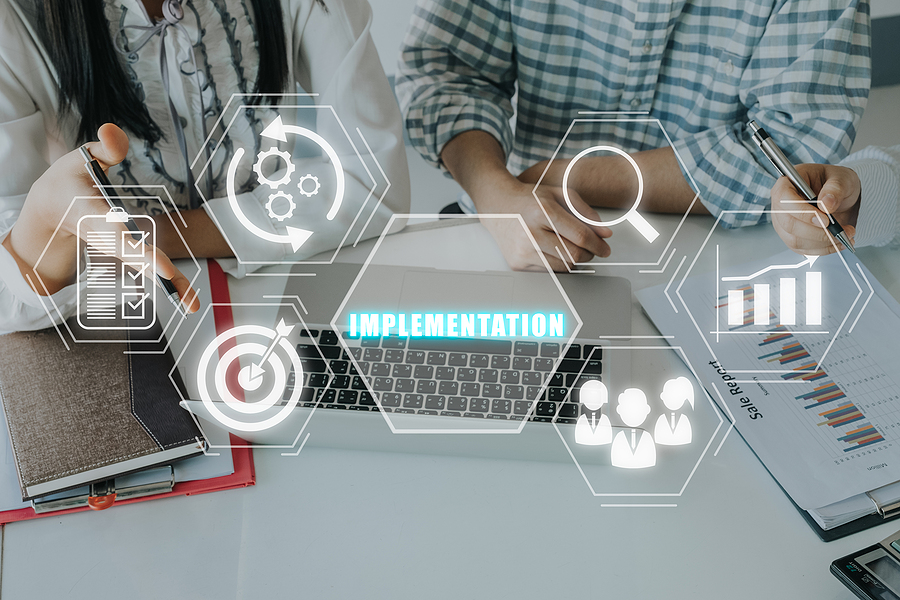So, you’ve decided to implement an ERP in your business. How exciting! ERP systems can digitally transform your business and improve efficiency and profitability. However, you may be unsure as to what comes next. What are the practical steps to implement an ERP?
Before we walk you through the implementation process, it’s worth noting that we recommend partnering with a trusted ERP consultant (like our experts here at ASI) who can help guide you. An ERP consultant can pinpoint areas where your company could benefit the most from an ERP, help you choose the right ERP, and suggest relevant add-ons and integrations.
In order to successfully implement an ERP, you’ll need to take the following four steps:
- Team Formation, Planning, and Gathering Requirements
To succeed in implementing an ERP, you’ll need the right people. You should gather key stakeholders from every business department that will use the ERP. You also need an executive “sponsor” who will keep the executive team informed of implementation progress. Don’t just talk to IT! Your new ERP will affect nearly everyone in the company.
Once you’ve gathered these people, talk to them. As you’re building your list of requirements, make sure to keep in close contact with the stakeholders from each department. They’ll have requirements you may be unaware of. It might help to examine what you like about your current system as well as which problems exist that an ERP could help solve.
- Selecting a System
Once you have a team and a list of requirements, it’s time to make the big decision. Which ERP system will you choose? Since an ERP is so integral to your business, you should take your time. Interview multiple vendors (asking them the same questions so you can compare easily). Some important questions to ask include who owns the data you upload to the system, how you will be charged by the ERP (per user, by usage, etc.), and how the data is secured (for cloud-based systems). Invite a few vendors to give you demonstrations. And don’t forget to discuss customizations, add-ons, and integrations you’re interested in.
- Implementation, Data Migration, and Testing
Now that you’ve chosen an ERP, it’s time for the fun part! Okay … maybe the next part isn’t so fun after all. In the first place, you’ll need to clean and extract data from your old system and import it to the new system. This would be a great time to review and enhance your data dictionary as well as determine who will take responsibility for data management. You and your team must also set up workflows, process maps, and many different kinds of reports.
Lastly, you and your vendor will need to rigorously test your system and fix any bugs or glitches you uncover. Pay particularly close attention to integrations between the ERP and other systems as well as any custom coding you have implemented.
- Rollout and Training
Once everything is working well, it’s time to officially launch the system. Once the system is in place, immediately schedule training sessions for every user. Train teams or departments together so they can learn how to use their particular “corner” of the system. Because many users will have questions as they begin to use the system, make sure there is ongoing support and training available to them. In fact, some of this training can be built into the system itself.
Need Support Through the Implementation Process? We Can Help!
The best support for your implementation project is an ERP consultant who understands each platform as well as your unique business goals and challenges. At ASI, we provide expert consultants as well as two of the best ERP systems on the market, Acumatica and Sage. Please contact our experts if you would like to learn more about any of these services.

